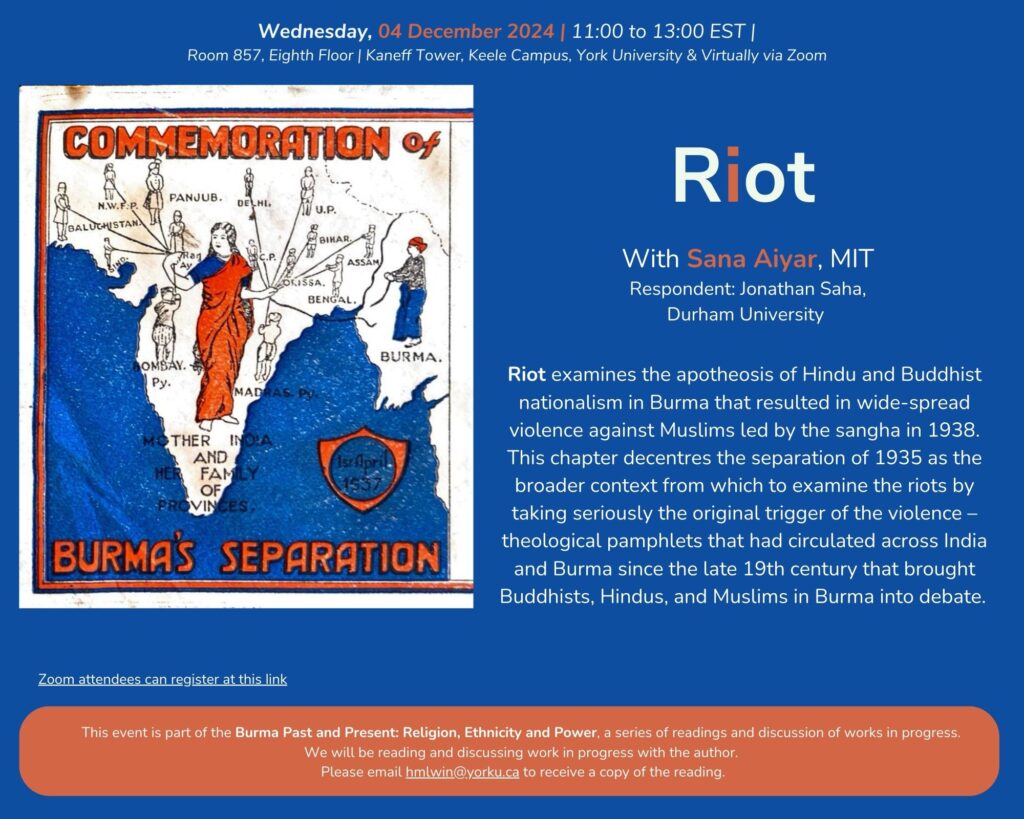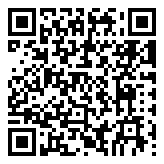Riot

Wednesday, 04 December 2024 | 11:00 to 13:00 EST | Room 857, Eighth Floor, Kaneff Tower, Keele Campus, York University and virtually via Zoom
With Sana Aiyar, MIT
Respondent: Jonathan Saha, Durham University
Riot examines the apotheosis of Hindu and Buddhist nationalism in Burma that resulted in wide-spread violence against Muslims led by the sangha in 1938. This chapter decenters the separation of 1935 as the broader context from which to examine the riots by taking seriously the original trigger of the violence – theological pamphlets that had circulated across India and Burma since the late 19th century that brought Buddhists, Hindus, and Muslims in Burma into debate. These publications raised existential questions about the truthfulness of god, challenging Buddhist monks, Muslim Maulvis and Hindu Swamis to prove the superiority of their religion. At the same time, these texts aimed at proselytizing, through dialogue, laymen and women, whose readings and interpretations of the same were mediated by their social and political context. The inter-religious, inter-textual discourses of these tracts invoked the sacred geography and community of India and Burma. The separation of 1935 drew a cartographic line on this map, but it did not fracture the shared religious geography and religious communities that had been constituted by these custodians of faith. This chapter situates the riots of 1938 within this intimate politico-religious map to highlight the wide resonance and long-lasting reverberation of the sangha’s call to action. The circulation and networks of religious debate and majoritarian politics that produced the authors of these texts not only predated but outlasted the separation of 1935. The xenophobic nationalism that violently expressed itself in July 1938, I argue, was in fact the articulation of the shared project of Hindu and Buddhist religious majoritarianism that coalesced in the 1930s around the imagined existential threat posed by Muslims in India and Burma. This was the first successful mass mobilization of religious majoritarianism in South Asia which anticipated the partition of 1947 by a decade and emerged from the same exclusionary Hindu and Buddhist nationalist politics that marginalized Muslims in both India and Burma.
This event is part of the Burma Past and Present: Religion, Ethnicity and Power, a series of readings and discussion of works in progress. We will be reading and discussing work in progress with the author. Please email hmlwin@yorku.ca to receive a copy of the reading.
This event is hybrid. Virtual attendees should register at this link.

